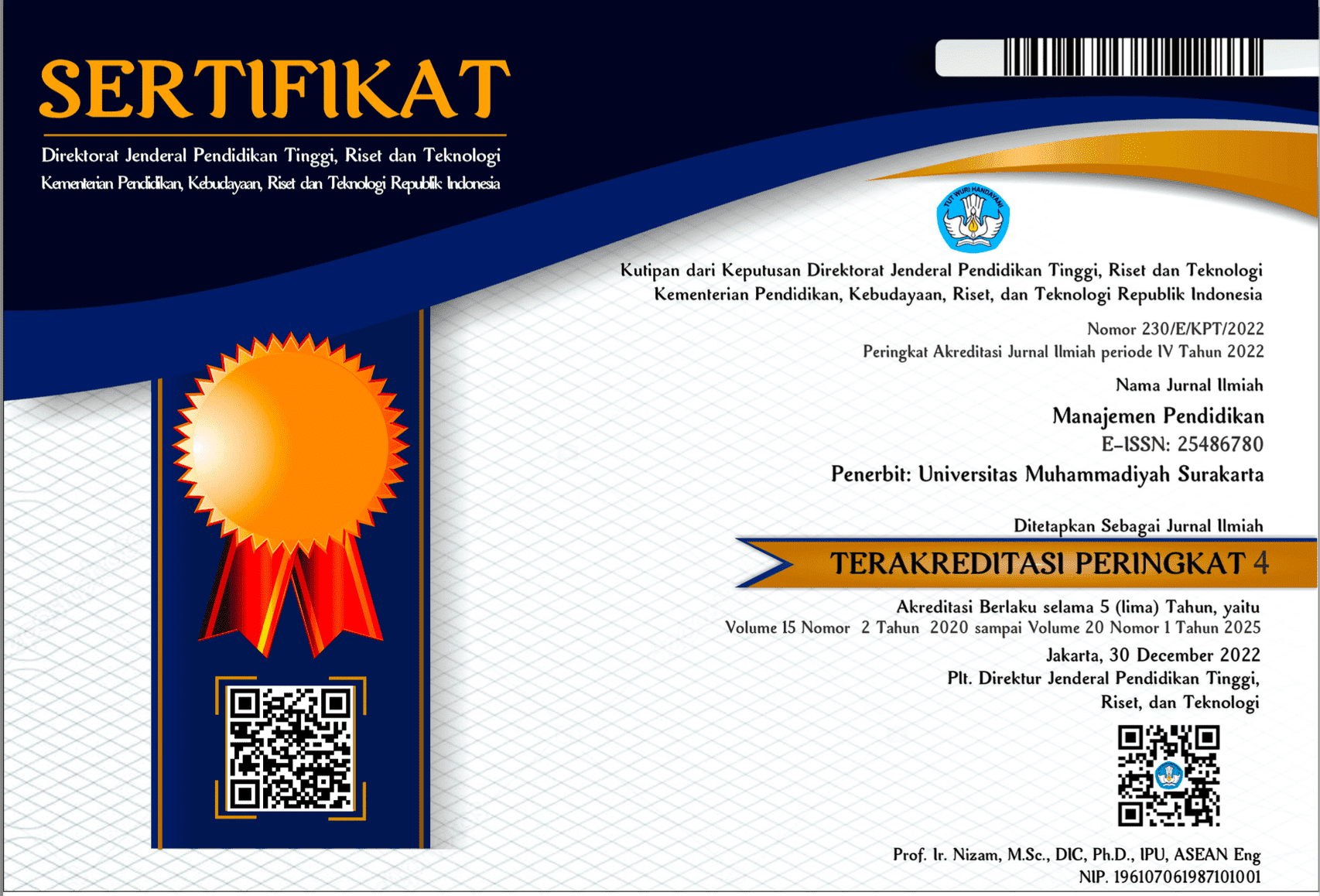Peningkatan Penguasaan Materi Kependudukan Melalui Pembelajaran Jigsaw
Wartana Wartana(1*)(1)
(*) Corresponding Author
Abstract
Keywords
Full Text:
PDFReferences
Arends. 1997. Cooperative Learning. New Jersey: Pretice-Hall, 1982.
______. 2001. Teaching Children Science. New Jersey: Pretice-Hall, 1982.
Arikunto, Suharsimi dan Cepi Safruddin Abdul Jabar. 2007. Evaluasi Program Pendidikan: Pedoman Teoretis Praktis Bagi Praktisi Pendidikan. Jakarta : Bumi Aksara.
Cepi, Riyana.2007. “Komponen Pembelajaran”. http//:www.upi.ac.id.
Departemen Pendidikan Nasional. 2003. Undang-undang Nomor 20 Tahun 2003 tentang Sistem Pendidikan Nasional. Jakarta : Departemen Pendidikan Nasional.
_______. 2009. Daftar Kolektif Hasil Ujian Nasional Tahun Pelajaran 2008/2009 SMP Negeri 3 Teras Kabupaten Boyolali. Semarang: Dinas Pendidikan Provinsi Jawa Tengah.
Hamalik, Oemar. 1994. Kurikulum dan Pembelajaran. Bandung : Sinar Baru Algesindo.
_______. 2002. Psikologi Belajar dan Mengajar. Bandung: Sinar Baru Algesindo.
Lie, Anita. 2007. Cooperative Learning. Jakarta : Grasindo. Peraturan Menteri Pendidikan Nasional Nomor 78 Tahun 2008 tentang Standar Kompetensi Lulusan SMP/MTs Mata Pelaran Matematika. Jakarta : Departemen Pendidikan Nasional.
Reny, Nurhayati. 2006. Penerapan Cooperative Learning Tipe Jigsaw Pada Pembelajaran Seni Tari Sebagai Upaya Meningkatkan Kreativitas Belajar Peserta didik Di SMP Negeri 2 Dayeuhkolot Kabupaten Bandung. http://digilib.upi.edu/pasca/available/etd-0926106-131557/
Suwandi, Sarwiji. 2008. Modul Pendidikan dan Latihan Profesi Guru : Penelitian Tindakan Kelas. Surakarta : Panitia Sertifikasi Guru Rayon 13 UNS.
Slavin, Robert E. 1994. Cooperative Learning: Theory, Research, and Practice. Second Edition, London : Allyn and Bacon. 1995.
Sujati. 2000. Penelitian Tindakan Kelas. Yogyakarta :Universitas Negeri Yogyakarta.
Article Metrics
Abstract view(s): 253 time(s)PDF: 165 time(s)
Refbacks
- There are currently no refbacks.










